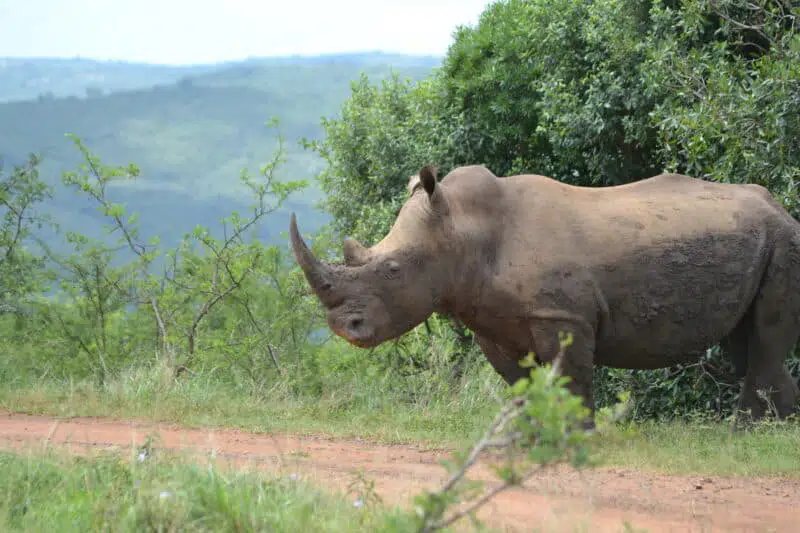Join us as we dive into our list of the Top 10 Animal facts.
While we often marvel at the sheer diversity of life on our planet, there’s a hidden world of incredible animal abilities waiting to be discovered.
Prepare to be utterly astounded as we unveil some mind-blowing animal facts that will captivate even the most passionate animal enthusiasts. From adorable creatures you never knew indulged in kisses to those who enjoy a tipsy escapade, the animal kingdom is a treasure trove of astonishing surprises!
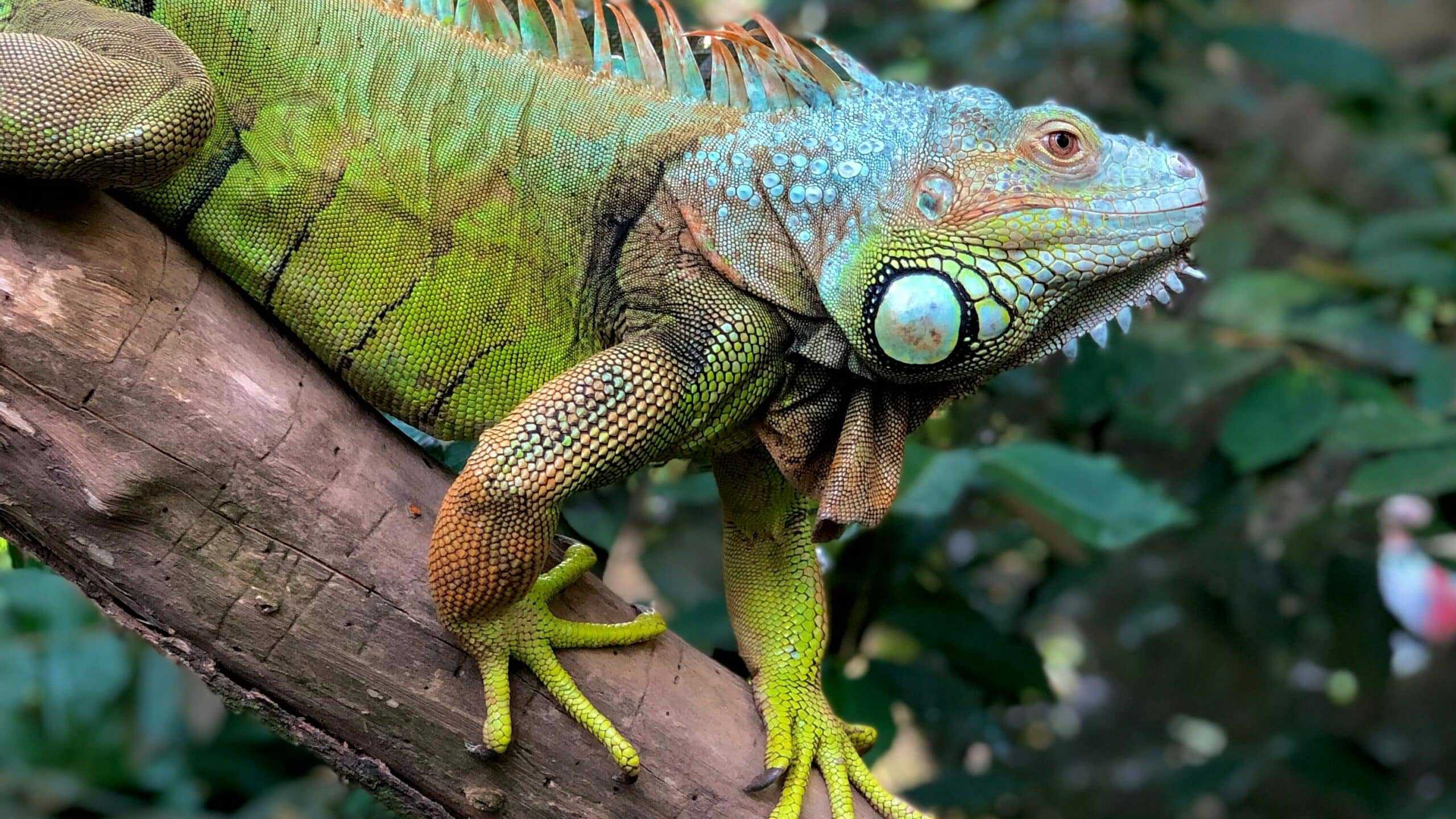
We think that by learning more about the world’s animals, people will be better able to care for them. Mammalia is the official classification. Warm-blooded animals with hair or fur, and their offspring who consume milk, are classified as mammals, unlike other animal species, such as birds and insects, that are born in eggs.
Animals may be cute, cuddly, swift, intelligent, and obnoxious. However, they’re all quite incredible! Animals fascinate humans. Therefore, these fascinating animal facts are ideal for sharing. The list features the most often questioned, entertaining, engaging, and bizarre animal facts worldwide. Animals that are fascinating and amazing abound on our planet!
Click below to jump to a section of your choice:
Key Points
| Animal Fact | Description |
|---|---|
| 1. Human and Koala Fingerprints | Koala fingerprints are similar to humans; they’ve been mistaken for human prints at crime scenes. |
| 2. Rhino Horn Composition | Rhino horns are made of keratin, the same protein found in human hair and nails, with a calcium core. |
| 3. Frog Hypnotism | Frogs can be hypnotized by gently touching their bellies while they lie on their backs, inducing a state of immobility. |
| 4. Sloth’s Slow Digestion | Sloths take two weeks to digest a single meal due to their unique digestive system adapted for breaking down tough leaves. |
| 5. Elephants Can’t Jump | Elephants are unable to jump due to their anatomy; their legs lack the necessary spring-like structure for jumping. |
| 6. Cow’s Milk Production | A cow produces about 200,000 cups of milk in her lifetime, making them efficient milk producers with a nutrient-rich product. |
| 7. Giraffes’ Silent Singing | Giraffes are not completely silent; they produce humming sounds at night, and their vocalizations were recently discovered. |
| 8. Ostrich Brain vs. Eyeball | Ostriches have eyes larger than their brains, adapted for keen eyesight to detect predators despite having a small brain. |
| 9. Orangutan Bone Injuries | Orangutans frequently suffer broken bones due to falling from trees, and their populations are threatened by habitat loss. |
| 10. Shrimp Heart Location | A shrimp’s heart is located in its head, technically in the thorax behind the head, making it a unique anatomical feature. |
#1. Human and Koala Fingerprints
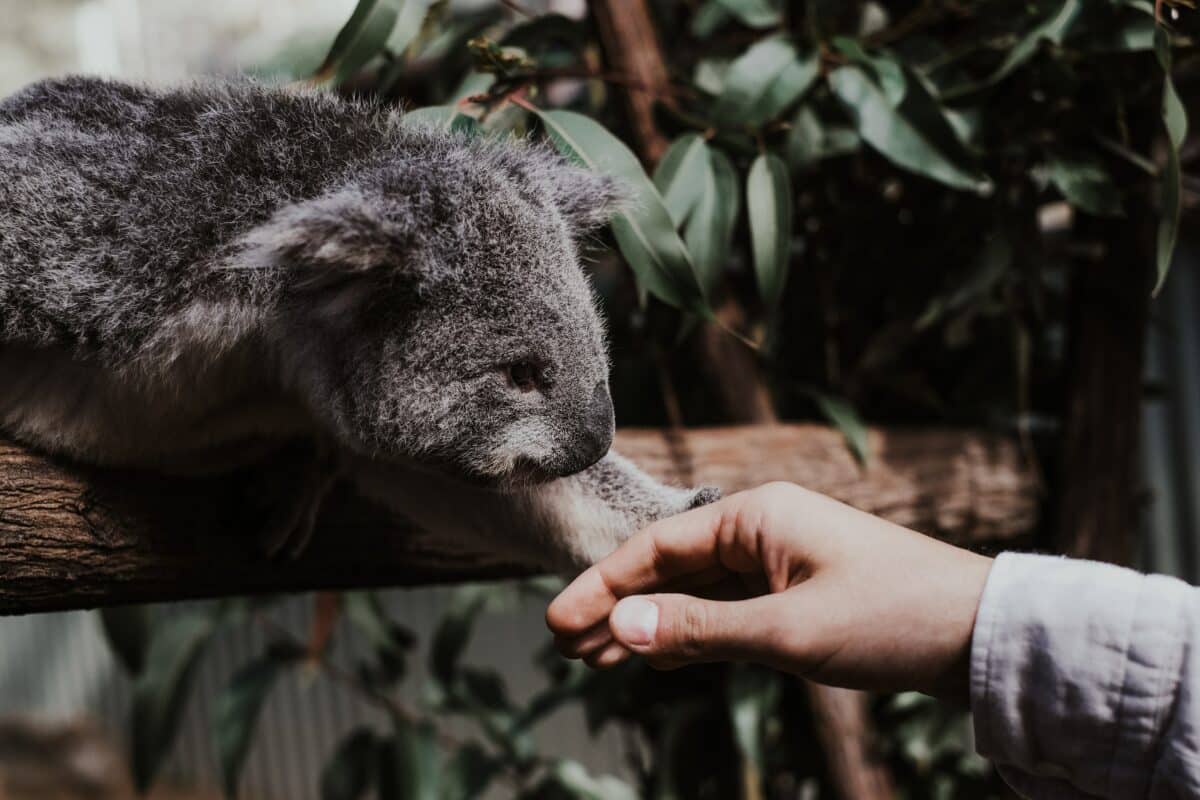
Human fingerprints are surprisingly similar to Koala fingerprints. So much so that they’ve been mistaken for human fingerprints at crime scenes.
While orangutans and chimpanzees have fingerprints similar to ours, koalas are evolutionarily separated from humans since they are close cousins. Fingerprints, it turns out, are an outstanding example of convergent evolution. Or the development of identical features in distinct species independently of one another.
Fingerprints are thought to be helpful in two ways. First, they improve grip. Allowing an animal to easily hold onto rough surfaces such as branches and tree trunks. Second, they boost our touch sensitivity. Allowing us to perceive the textures and forms of the objects we grip at a finer level.
It’s not that different for koalas. They are pretty selective feeders who strongly prefer older eucalyptus leaves. Their fingerprints allow them to properly check their meal before eating it.
Officers are not worried about koala gang bangers. But koala fingerprinting could be confused for human fingerprints at a crime scene, making identification difficult. Koalas eat by extending outside and ascending upwards onto the small branches of trees and shrubs and catching a bunch of twigs before delivering this over their mouth.
As a result, the most robust explanation for the formation of dermatoglyphics (fingerprints) is the physical adjustment for capturing that creates a multidimensional compressive load just on their epidermis.
Fundamental stresses should be properly felt for precise control of motion and stable forces, necessitating a well-organized solid skin surface. Another great one from the list of interesting animals.
#2. Rhino Horn is made of hair
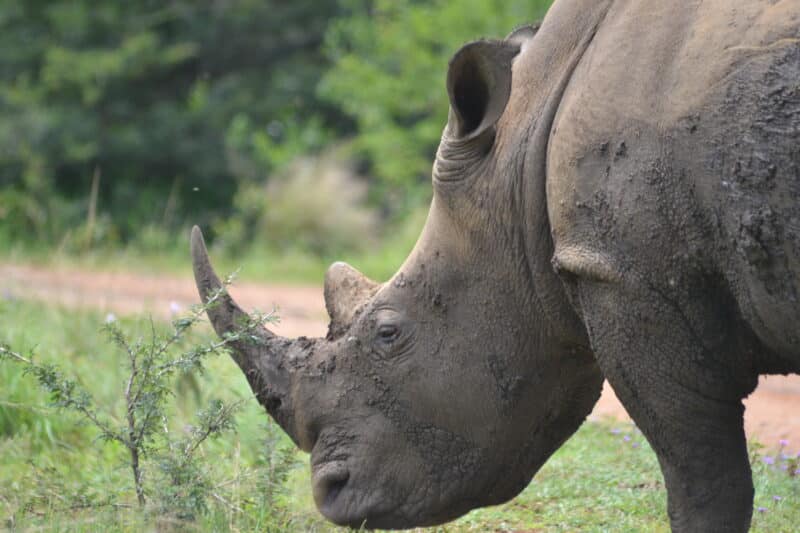
Rhino horns are formed with the same protein that makes up your hair and nails: keratin. The rhino horn has a calcium core surrounded by a thick keratin covering. Other animals’ horns have a bone center. Therefore, this is unusual in the animal kingdom.
Rhinos sharpen their horns by rubbing them against trees because of their suppleness. According to Ohio University experts, rhinos’ horns have merely mineral deposits of calcium and melanin at the core, similar to hooves and beaks, unlike other horned mammals, which have a bony core wrapped in keratin. The same study found that horns, like pencils, are sharpened by honing.
Variations in rhino horn keratin composition caused by nutrition and geographic location may be used to identify the animals similarly to fingerprinting. Allowing ecologists like Raj Amin of the Zoological Society of London to determine which group a rhino belonged to. This information will aid law enforcement officers in their efforts to combat unlawful poaching.
The rhino horn was initially thought to have therapeutic powers. Including the ability to treat nosebleeds and migraines, cure diphtheria and food poisoning, and increase libido.
However, research conducted by the Zoological Society of London disproved claims that rhino keratin had any impact on the human body. The use of rhino horns for therapeutic purposes has been prohibited since 1993.
#3. Frogs and hypnotism
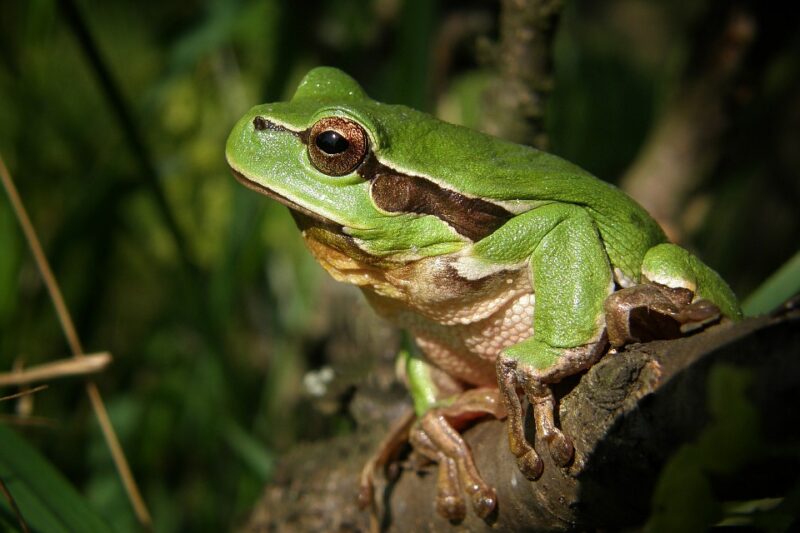
An interesting fact about animal number two: you can hypnotize a frog by softly caressing its tummy while it is lying down on its back. This may seem unusual, but one of nature’s most impressive features is the ability to mesmerize animals. I’m not talking about playing a tape for your dog with positive affirmations.
That appears to be a phenomenon. It induces the condition of immobility known as ‘catalepsy,’ which is also observed in humans in some levels of hypnosis. Put a frog on its back and keep it motionless for a few seconds to hypnotize it. It will remain immobile if you remove your hands. Flip it back over to undo the hypnosis.
Hypnotizing frogs is a beautiful thing to undertake, especially with kids. It encourages everyone to come outside and appreciate nature. It’s an opportunity to learn about and explore a frog’s environment while also closely examining the frog. It causes no harm to the frog if you are careful and respectful of life.
Physical manipulation, such as forced immobility, movement, or contact, causes catalepsy in the animal. This is typically a natural reaction. Freezing is an inborn survival response because predators can detect movement. A quick fear or shock can cause various animals, including humans, to freeze or death-feint.
According to some hypotheses, hypnosis in humans induces this essential response because the method necessitates such intense concentration that the rest of the environment is minimized or erased. Though some of the first eastern hypnosis treatments employed a loud gong to induce hypnosis, contemporary hypnotherapy relies on physical relaxation and the symbolic meanings of words to focus the mind and limit attention.
#4. Sloths and food breakdown
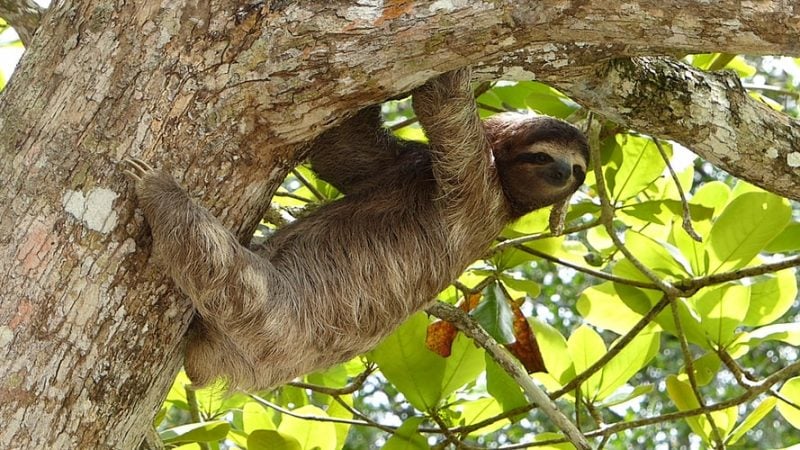
The meal of a sloth takes two weeks to break down. The brown-throated three-toed sloth is a wonderfully uncommon creature that lives in Central and South America’s rainforests.
The name “sloth” is associated with “slow”, and sloths certainly fit that description. Because their food is deficient in calories and nourishment, sloths have evolved to expend extremely little energy. Brown-throated sloths consume stiff, rubbery jungle leaves as their primary food. Toxins also abound in these leaves, a form of protection for rainforest trees.
Sloths have developed a remarkable digestive system to cope with their leafy diet. Their stomachs, much like those of cows, are multi-chambered and house a variety of microorganisms that aid in the gradual breakdown of leaves.
In fact, the sloth’s digestive process is the slowest of any mammal, taking a full two weeks to complete a single meal. To adapt to their arboreal lifestyle, sloths have developed specific features. Their fur grows from their bellies to their backs, naturally hanging upside down, as they typically do. This unique arrangement of fur ensures that rainwater flows away from their bodies.
Interestingly, brown-throated three-toed sloths make a weekly descent from the jungle canopy to urinate and defecate. While their curled claws are incredibly useful for navigating the treetops, they pose a challenge for ground movement, leaving sloths to crawl laboriously, making them vulnerable to predators like ocelots.
One curious aspect of sloths is their symbiotic relationship with the vegetation in their fur. Their hair provides a fertile environment for the flourishing of algae, fungi, and moths, which are rich in macro and microorganisms. This adaptation, while aiding their camouflage, also adds an element of risk, as sloths may occasionally fall from trees due to this lush ecosystem in their fur.
#5. Elephants can’t jump
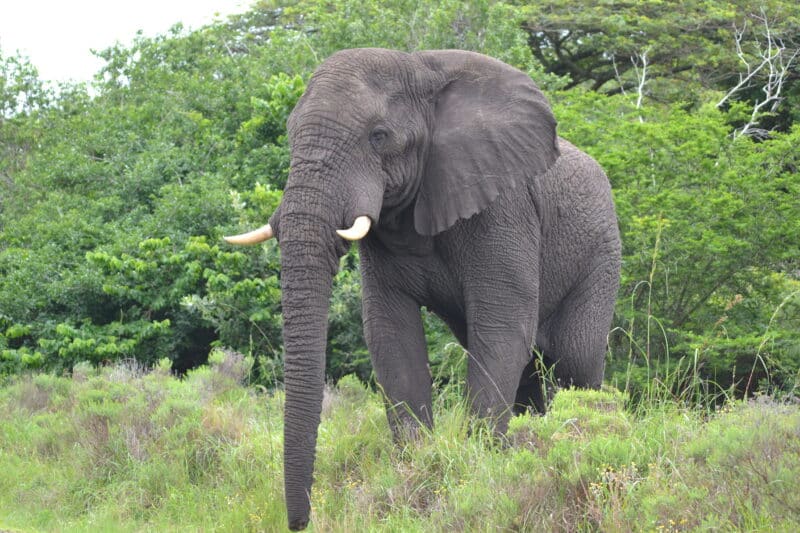
Contrary to what you might have seen in Saturday morning cartoons, elephants are not equipped for jumping or leaping, and here are some fascinating facts about animals to explain why. Most creatures that possess the ability to jump, like kangaroos, monkeys, and frogs, do so primarily to evade predators.
Elephants, on the other hand, rely on their colossal size and the protection of their social groups to ensure their safety in various situations. Lifting a massive 4-tonne animal off the ground is a herculean task, and for elephants, it’s an impossibility.
Unlike many animals, elephant legs are designed with all their bones pointing downwards, lacking the “spring” required for launching themselves off the ground. Despite this limitation, elephants boast numerous remarkable traits, such as a highly developed sense of smell, a remarkably low risk of cancer, and complex social lives.
However, they are simply not built for jumping, which comes as no surprise. Additionally, it’s worth noting that these magnificent creatures are not known for their speed, as they can’t exceed 15 mph (around 24 km/h). When adult and young elephants sprint, they maintain at least one foot on the ground at all times, making them permanently grounded. So, it’s safe to say that elephants should probably not attempt to jump like kangaroos, earning them a well-deserved spot in the realm of fascinating animals.
#6. Cows and milk production
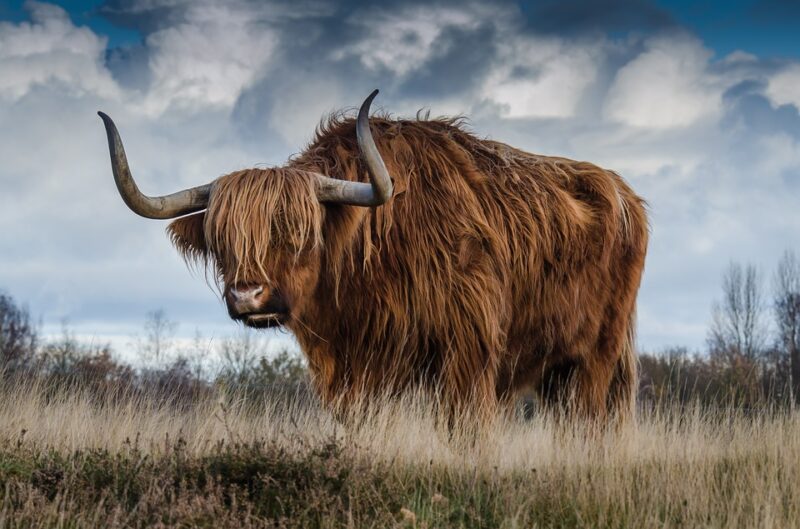
In her lifetime, a cow produces about 200,000 cups of milk. Cows are incredible creatures. They consume much food, although cows generate considerable amounts of milk. Cow’s yearly diet consists of 2.5 tonnes per grain, 6.5 tonnes of forage, a few yards of grassland, plus up to 7,000 liters of water.
Cows produce around 90 cups of milk daily, enough to meet the needs of 30 children with three cups each day. That’s 200,000 cups of milk in a cow’s lifetime. That’s the top 10 interesting facts about cows! Many more dairy products are made with milk. A kilogram of cream cheese necessitates 39 glasses of milk, a kilogram of cheese necessitates 19 glasses, and 8 ounces of yogurt necessitates one glass of milk.
Compared to the number of calories, milk is a nutritional food that provides an extensive array of natural sources of minerals. Milk contains 300 milligrams of calcium per cup and phosphorus, Vitamin B-12, potassium, magnesium, riboflavin, protein, and other minerals. Vitamin D is administered to milky substances, allowing the body to utilize the calcium inside the milk to help establish and strengthen bones.
On either side, various milk-like products, such as rice milk, almond, and coconut, are accessible. Products vary in terms of the nutrients that are naturally present, as well as in pricing. Rice milk, almond, and coconut do not include Vitamin B-12, calcium, or riboflavin.
In addition, milk-type drinks provide significantly less muscular protein. Most almond, coconut, and rice milk drinks have less than 1 gram of protein per 8-ounce glass, whereas milk has 8 grams. Another great one from interesting animals.
#7. Giraffes are mute
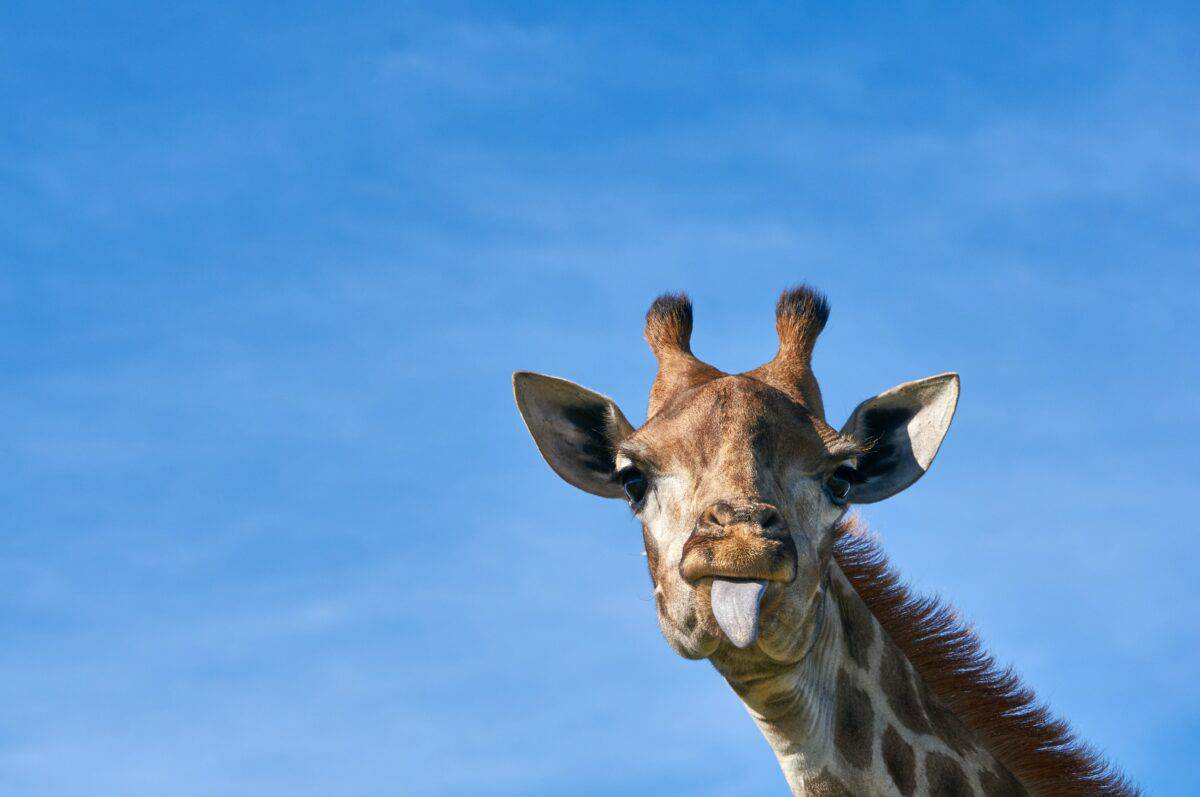
Giraffes do not have vocal cords. For many years, it was considered that giraffes spend most of their lives silent, save for the odd snort. According to new research from the University of Vienna’s section investigating animal acoustics, giraffes aren’t so silent after all: they spend their evenings singing.
Zookeepers claimed that their captives’ only sound was infrequent snorts for decades. The traditional idea was that giraffes’ long necks were to blame for their calm demeanor. Giraffes do have a larynx (voice box), but it’s possible that their 13-foot-long (4-meter) trachea couldn’t provide enough airflow to vibrate their vocal folds and emit noises.
Researchers theorized that humans couldn’t hear giraffe communication because the frequency was too low. Elephants and other huge animals communicate across great distances using ultra-low frequency rumbles, so why not giraffes?
Over eight years, researchers recorded giraffes at three zoos, accumulating more than 938 hours of giraffe noises. That’s a lot of data, and the researchers seem tired of sifting through it all. They mention in their research that “Investigating giraffe vocal communication proved to be time-consuming, tiresome, and difficult. We highly advise that an automated system be developed to assist in analyzing large amounts of acoustic data”.
What made it so aggravating was that the researchers didn’t listen to the recordings; instead, they studied them visually. They were on the lookout for particular low-frequency sound patterns with harmonic structures. They discovered them, and the pattern is clear.
The humming noises only happened at night, and the average hum was at 92Hz in frequency, which isn’t infrasound but is still low enough for human hearing. The giraffe keepers and zoo administrators had never heard the noises before the researchers played them back to them.
#8. Ostrich’s brain size vs. eyeball
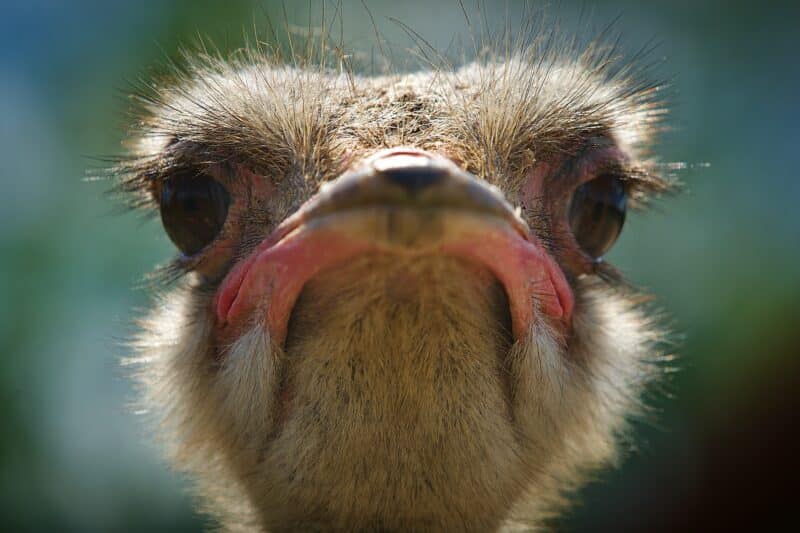
Number 8 on the top 10 interesting facts about animals is an ostrich’s brain is smaller than its eyeball. The ostrich is the world’s most enormous bird, with the most prominent eyes in the domain of mammals, which are even more significant than its brain. The eyes of an ostrich are roughly 2 inches (5 cm) in diameter, or about the same size as a cue puck for billiards.
To adapt to its terrestrial existence, the ostrich requires wide eyes. Whenever presented with danger, it does not, contrary to popular opinion, hide its head in the ground.
It has a great perspective of the grassland and bushes thanks to its long neck and legs, which allow it to stand up to 9 feet tall.
The ostrich’s large eyes, which have many photoreceptor cells, combined with the size of the image produced by the lens, allow it to see incredible details of predators even at great distances. If it notices something trying to sneak up on it, it will flee quickly with its large, powerful legs.
#9. Orangutans and broken bones
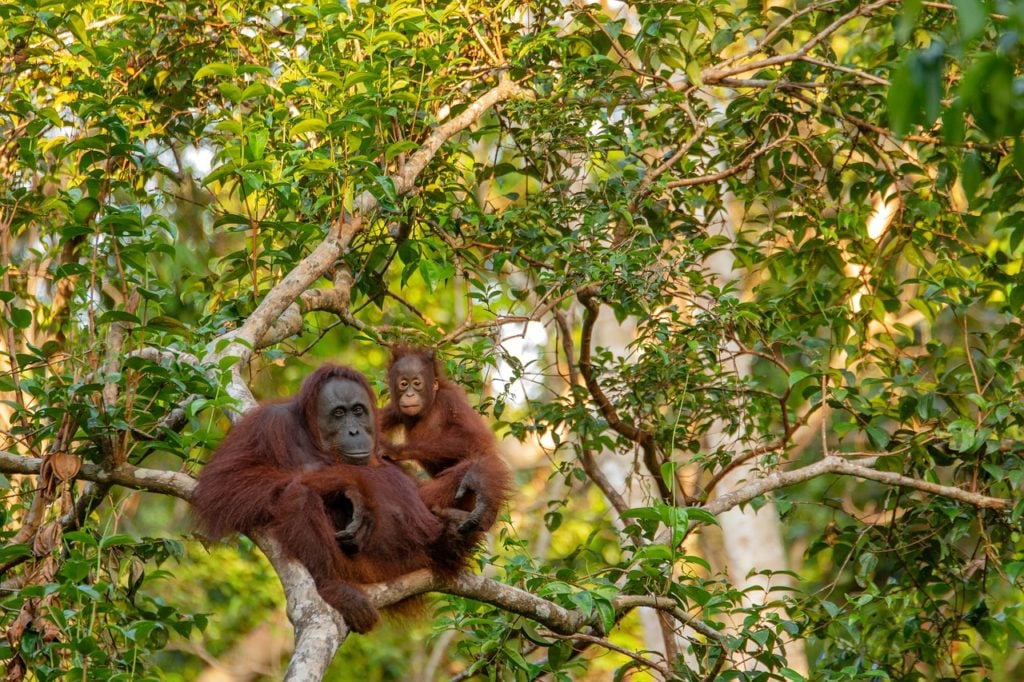
Because they fall off trees frequently, around half of the orangutans have damaged bones. Every year, between 2,000 and 3,000 orangutans are slaughtered. While accurate population counts of orangutans are challenging, estimates put the number of orangutans left in the wild at between 50,000 and 65,000.
Many scientists fear orangutans will go extinct in the wild in less than 50 years if the current pace of extinction continues. Never before has their entire life been jeopardized in such a severe way. Economic hardship, natural calamities, and human exploitation of the forest threaten the extinction of one of humanity’s closest cousins.
Orangutans have lost over 80% of their environment within the last 20 years, with 1997-98 wildfires killing an estimated one-third of the wildlife species. Nothing compares to the quantity of land destroyed by palm oil plantations in the twenty-first century, as alarming as the rapid loss of rainforests has been in recent decades.
Every palm field that wipes off hectares in the pursuit of big profits often murders a lot of orangutans. According to recent news, one palm oil company chased out orangutans while growing its cash crop production. Meanwhile, government laws intended to safeguard the environment and wildlife are vanishing faster than trees.
#10. Shrimp heart location
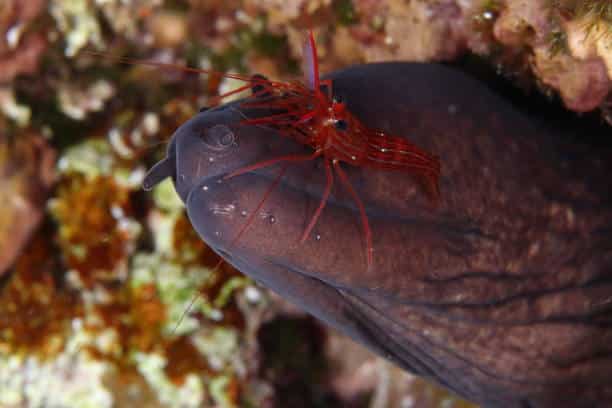
In the last top 10 interesting facts about animals, a shrimp’s heart is positioned in its head. Shrimp is a type of aquatic mammal often used as a cuisine. Shrimp may be located in both saltwater and fresh. Shrimp have ten legs and an exoskeleton that protects and structures their body instead of having a backbone. A shrimp’s heart is situated on its head.
However, according to a shrimp’s specific anatomy, the heart is located directly behind the skull on the thorax, although because a unified carapace covers both the skull and the thorax, the thorax could be mistaken for still being a portion of the head.
Shrimp are usually separated into only two parts: the head and the tail, with no thorax. We may still claim that a shrimp’s heart is on its head. Shrimp is a type of aquatic mammal often used as a cuisine. The heart of a shrimp is found on its head.
If we go by the precise anatomy of a shrimp, the heart is placed on the thorax directly behind the head. But both the head and the thorax are covered by a single exoskeleton. Thus the thorax might be mistaken for still being part of the head. However, a shrimp is usually separated into only the tails, and the skull is divided into two areas, with no thorax. We may still claim that a shrimp’s heart is on its head.
Summary Top 10 Animal Facts
Animals are multicellular, eukaryotic, aerobic creatures that eat plants and other animals as their primary source of nutrition. All of these creatures reproduce sexually and live in a natural environment. There are two to three million animal species worldwide. These are classified under the Animal kingdom, the largest and most diversified of the five biological kingdoms.
Animals are classified into Kingdom Animalia based on their commonalities, distinguishing characteristics, and genetic analyses. Animal species are defined by cell type, body symmetry, reproduction modes, nourishment, mobility, and environment, but not by size.
Several animal facts are unfamiliar. Some are interesting and amazing, as shown by the top 10 interesting facts about animals!
If you enjoyed reading this, connect to nature in a pandemic and reptiles around the globe next!
Thank you for reading Interesting Animals.
- Top 10 Cutest Fish in the World - April 15, 2024
- 10 Most Endangered Animals - April 15, 2024
- 16 Top Predators in the Food Chain - April 12, 2024

